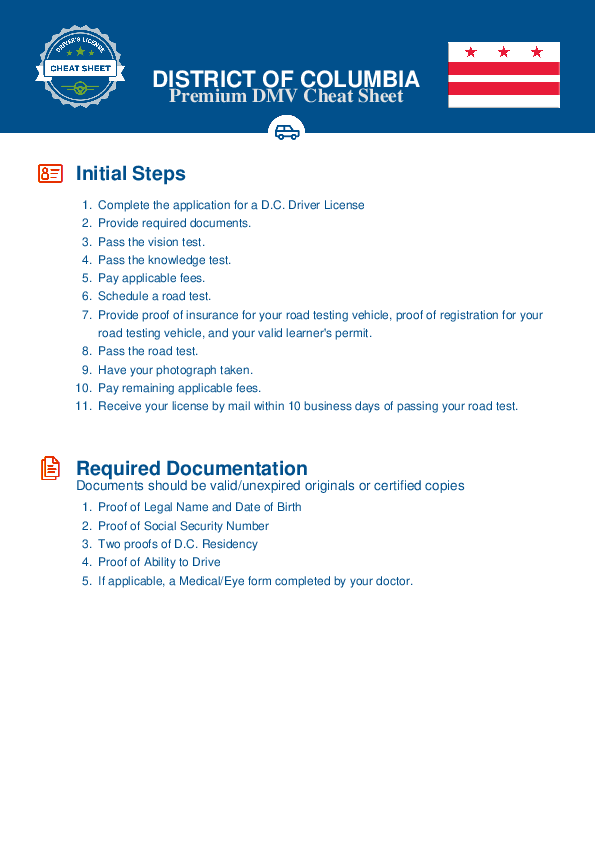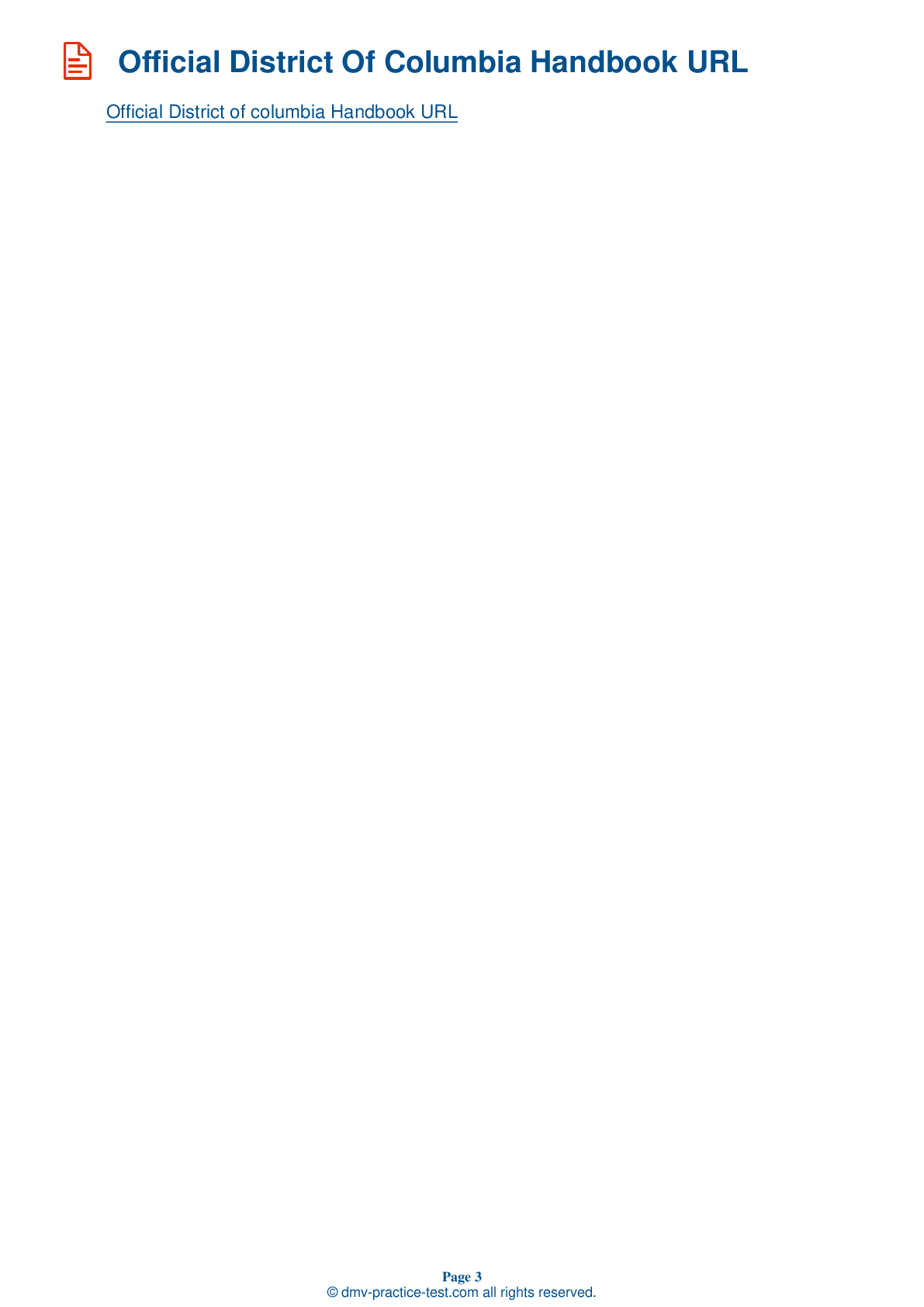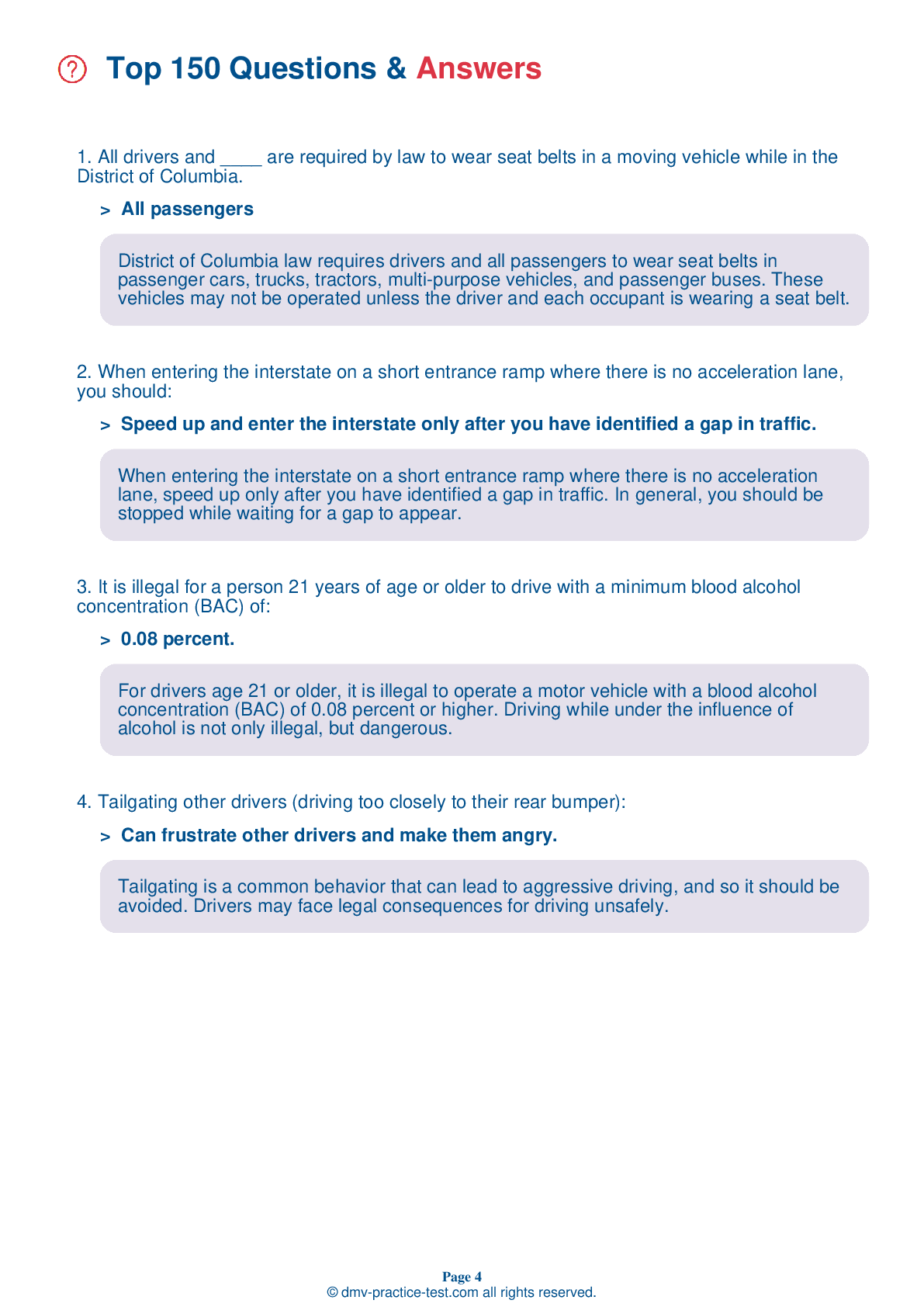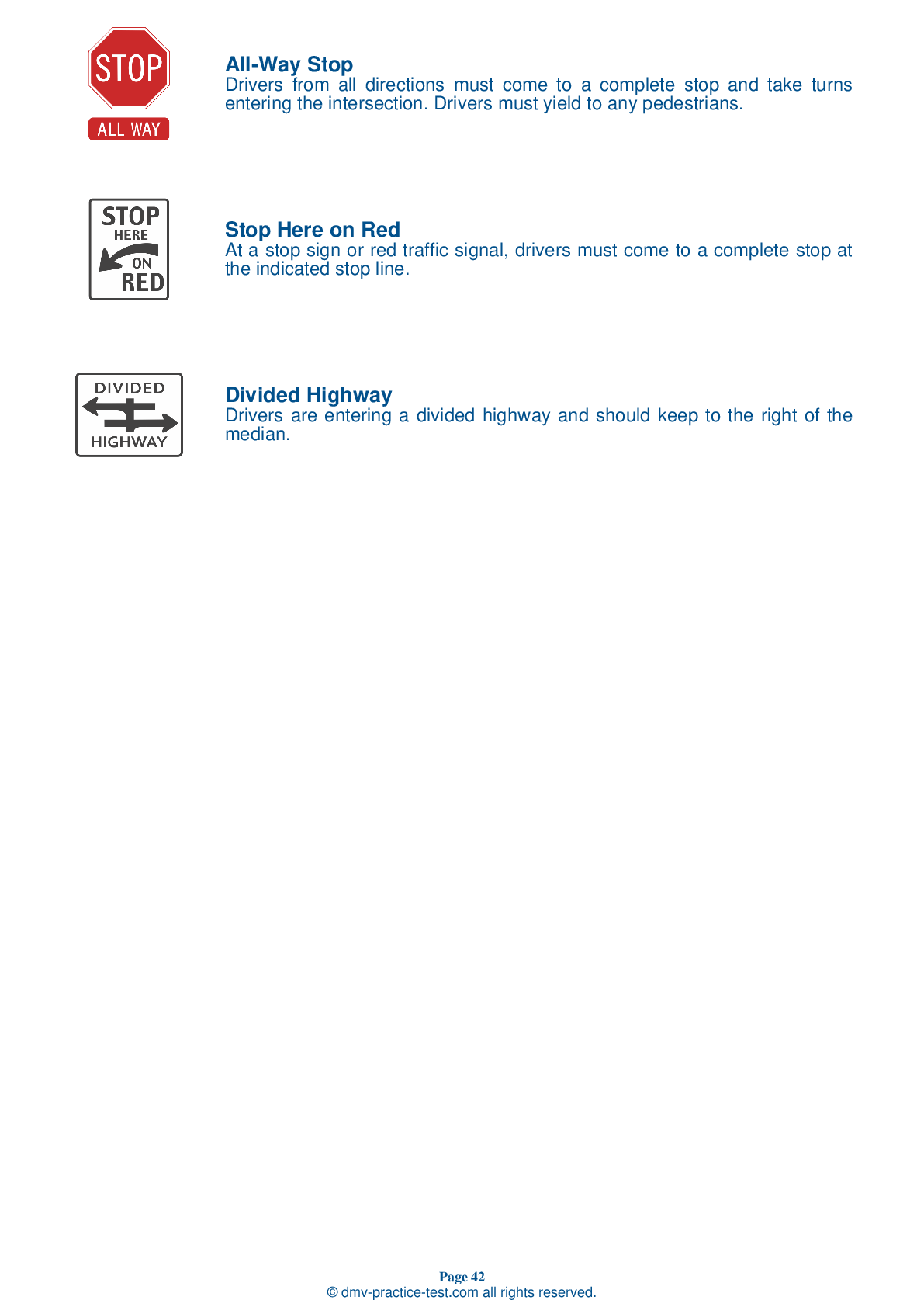FREE District Of Columbia DMV Practice Test #17 Page 2 of 3
This set of District Of Columbia DMV practise tests was been updated for January 2025. It includes questions based on the District Of Columbia Driver Handbook's most significant traffic signs and laws for 2025. Use actual questions that are very similar (often identical!) to the DMV driving permit test and driver's licence exam to study for the DMV driving permit test and driver's licence exam.
On the practise exam, each question gets a tip and explanation to help you remember the concepts. The written component of the official DMV test will include questions about traffic rules, traffic signs, and driving statutes, as well as information from the Driver Handbook.
To achieve the required passing grade, you must correctly answer 20 of the 25 questions. Take our DMV practise exam to help you prepare for your District Of Columbia instruction permit or driver's licence.
The DMV exam is available in several languages.
Using any form of testing help will result in an automatic fail, and the DMV may take further action against your driver's licence, so avoid it.
9 . When approaching an intersection that is controlled by a flashing red traffic signal, you must:
Treat a flashing red traffic signal the same as you would treat a stop sign. Come to a complete stop, yield to oncoming traffic or pedestrians, and proceed when the way is clear.
10 . When driving under snowy or icy conditions:
When driving under snowy or icy conditions, you should make speed and directional changes gradually. Never use cruise control when driving on snow or ice because your tires may lose contact with the road and you will lose control of your vehicle.
11 . Which of the following is a safe way to drive through a curve?
You should slow down as you enter a curve and increase your speed gradually as you exit. Increasing your speed as you enter a curve will make it more difficult to control your vehicle.
12 . Which of these statements is true about large trucks?
Large trucks take longer to stop than other vehicles traveling at the same speed. The average passenger vehicle traveling at 55 mph can stop within 400 feet. However, a large truck traveling at the same speed can take almost 800 feet to stop.
13 . This sign means:
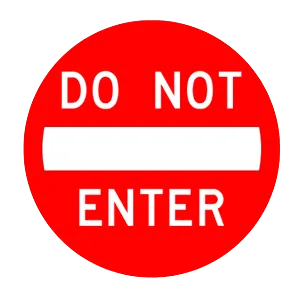
This sign means that it is not safe for drivers to enter the indicated road or driveway from their current direction. If you come across one of these signs, you should immediately turn around and drive a different way.
14 . When sharing the road with a truck, it is important to remember that trucks generally:
Because of their size, trucks need longer distances to stop than smaller vehicles do.
15 . To help prevent crashes, you should:
Crashes often happen because one driver does something that other road users are not expecting. You should communicate with other motorists, bicyclists, and pedestrians by doing things like signaling when slowing down, stopping, or changing direction. Use your emergency signals or horn when appropriate.
16 . What message will be found on a red octagon-shaped sign?

An octagonal (eight-sided) sign always means "stop." You must always come to a complete stop at this sign.
Need Car Insurance? No problem!
Compare the best rates in District Of Columbia and find a personalized policy that meets your needs.
1. Are You Currently insured ?
2. Married ?
3. Do you own your Home?
4. Do you have more than 1 car ?
5. Have you or a Family Member Honorably Served in U.S. Military ?
6. Your Name
7. Age
8. Zip code
IMPORTANT REMINDER:Auto Insurance is Mandatory to drive in District Of Columbia. Get covered before you hit the road to avoid any fines.
Ranked by best match
